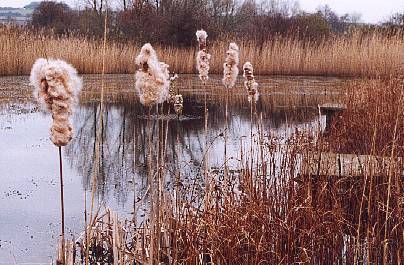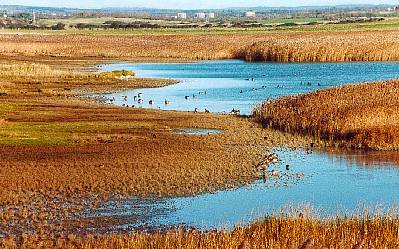

 |
FaunaFive rare Horse-flies have been found here, and a Soldier-fly known from only a few sites in Britain. The ponds north of the A27 (accessible only through the pedestrian underpass) seem to get far fewer visitors than the main part of the reserve, but are well worth a visit for dragonflies and pondlife. The distinctive Red-eyed Damselfly may be found at Peter's Pond, where it favours the various water-lilies. This is also a good place to see Water Vole, rapidly heading towards extinction in many counties. There are about 100 individuals on the reserve, forming an isolated population. Peter's Pond is shown on the left. |
Farlington Marshes is a Site of Special Scientific Interest (SSSI), and is the city's only Local Nature Reserve. Internationally, it is designated as a Special Protection Area for Birds (SPA) and as a Ramsar site. The reserve is next to Langstone Harbour, which has been put forward as a candidate Special Area of Conservation (cSAC), but this new designation does not apply to the reserve itself.
See also descriptions by Hampshire and Isle of Wight Wildlife Trust, Hampshire County Council and Ralph Hollins.